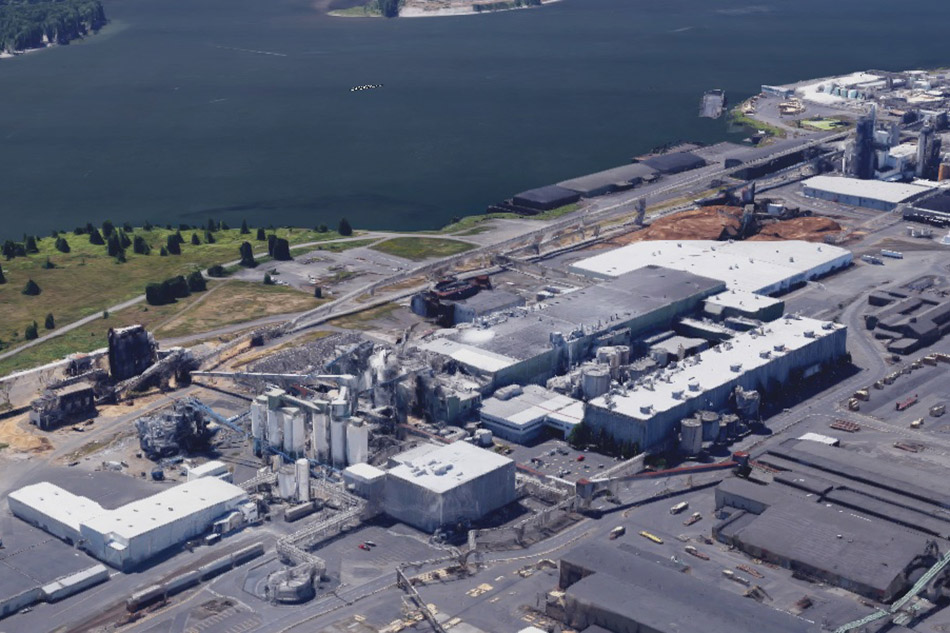
Norpac will convert a third of its production capacity to recycled packaging. | Google Maps screen capture.
A Pacific Northwest mill has pledged to bring in an additional 400,000 tons per year of recycled paper as it shifts into packaging production.
Longview, Wash.-based North Pacific Paper Company, commonly known as Norpac, will convert a third of its production capacity to recycled packaging. Norpac will produce recycled linerboard and corrugating medium, both of which go into containerboard, as well as paper bag grades and kraft paper.
Company leaders say the recovered fiber capacity expansion will bolster recycling efforts throughout the Pacific Northwest. According to an Aug. 26 announcement, when the expansion is complete Norpac will have the ability to consume “all available waste and mixed paper grades recovered in Washington, Oregon and Idaho.”
In the release, Norpac CEO Craig Anneberg said the region faces an “unprecedented environmental challenge from waste papers” because of China’s import restrictions, which effectively ended mixed-paper exports to the country. China was previously the largest buyer of U.S. mixed paper in the world.
Since the loss of that market, U.S. MRFs and paper brokers have struggled to move mixed paper to market. Mixed-paper pricing has decreased from a national average of $84 per ton in January 2017 to a current national average of negative $2 per ton, according to RecyclingMarkets.net. OCC has also been heavily impacted, dropping in price from a national average high of $180 per ton in July 2017 to a current average of $28 per ton, according to RecyclingMarkets.net.
Those market realities have been particularly challenging for West Coast recycling operators, who were reliant on China as a buyer for some recovered commodities.
“By increasing our ability to produce 100% recycled packaging papers, our company will be able to help solve this challenge, transforming waste papers into much-needed packaging-grade papers for local and export markets,” Anneberg said.
The Norpac mill has historically served the printing and writing paper markets, and the mill will continue producing a variety of these paper types. But these markets have seen marked declines in demand in recent years. During a presentation at the Association of Oregon Recyclers’ conference earlier this year, Jay Simmons of Norpac said the market shift is largely a product of the continued digitization of media.
“We’ve really lost 85%-plus of our market share. It’s gone away. The consumption has just disappeared,” he said during the presentation.
Norpac began producing recycled secondary packaging last year in preparation for the upcoming expansion, according to the release.
Meanwhile, the containerboard market has been growing steadily, driven in part by the rise in e-commerce. Amid that increase in containerboard demand and a concurrent drop in recycled paper prices, domestic paper mills are taking note. Norpac is the latest of more than a dozen U.S. paper mills to increase their recovered fiber consumption. By and large, the mill projects have been conversions from higher-grade graphic paper production to recycled packaging.
More stories about fiber
- Packaging Corp. to buy Greif containerboard segment
- Fiber end users talk price increases, demand outlook
- Pizza box demand declining, report says